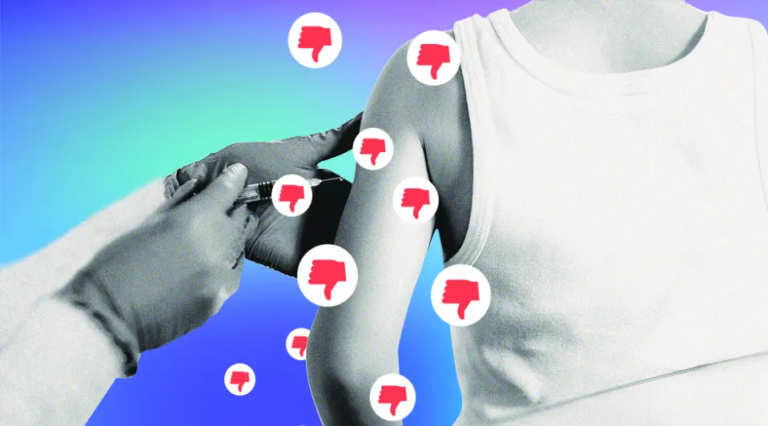The states of Missouri and Louisiana, together with three doctors, a health care advocate and a news website, sued federal officials and agencies including Anthony Fauci, MD, FBI special agents, the U.S. Food and Drug Administration (FDA), Department of Homeland Security (DHS), Department of Health and Human Services (HHS), State Department and Election Assistance Commission. The lawsuit accused government officials of engaging in a widespread campaign of pressuring and colluding with social media platforms to censor users’ free speech in violation of the First Amendment of the U.S. Constitution.1
The government officials advised social media platforms to actively stop the spread of “misinformation” during the COVID-19 pandemic and the 2020 election. Surgeon General Vivek Murthy put out a health advisory directing social media platforms to stop COVID “misinformation” from “taking hold.” The U.S. Centers for Disease Control and Prevention (CDC) flagged certain posts to show the platforms the type of information they wanted deleted. During the 2020 U.S. national elections, The Federal Bureau of Investigation (FBI) and the Cybersecurity and Infrastructure Security Agency (CISA) warned the same social media platforms to avoid election-related “misinformation.”2
Case History Reveals Evidence CDC Officials Pressured Social Media Companies to Engage in Censorship of Vaccine Information
In July 2023, the U.S. Federal District Court in the West District of Louisiana issued a preliminary injunction preventing the government from coercing social media platforms to censor information after being presented with more than 1,400 pieces of information gleamed from internal government documents.3 Preliminary injunctions, which are issued at the beginning of litigation, are intended to either stop or restart the actions of the defendant in order to maintain the status quo prior to the final judgment being issued.4
Freedom of Information Act (FOIA) requests reveal that government officials pressured Facebook and Instagram to censor information and on-line posts. The CDC went so far as to point out specific posts that they considered misinformation to social media companies. An e-mail disclosed that a White House official pressured Facebook to take action against not only information they considered “misinformation” or “disinformation” but any content that could induce “vaccine hesitancy” among the public. In response, Facebook not only complied with requests to the remove posts that contained information which did not comply with the CDC’s position on COVID shot safety and effectiveness, but it also blocked groups that discussed COVID shot injuries and deaths.5
The 5th Circuit Appellate Court affirmed the preliminary injunction finding that the government’s directive to the private social media companies to remove what it considered “misinformation” made the government responsible for the decision to remove social media posts. The court found that because the government coerced the conduct of private social media companies, that the conduct could be considered state action that violates the U.S. Constitution. The government immediately sought emergency relief from the U.S. Supreme Court.6
The Supreme Court Overturns Appellate Court Decision
On June 26, 2024 the Supreme Court overturned the Appellate Court’s decision stating that the plaintiffs lacked standing to seek a preliminary injunction. The nation’s highest court reasoned that the plaintiffs failed to show that there was a substantial risk that they would soon suffer an injury due to action by the defendants that would be redressable by the injunction. Therefore, the Court ruled that the plaintiffs are not entitled to a preliminary injunction.7
Supreme Court Majority Alleges Plaintiffs Lack Standing to Sue
In a 6-3 split decision, the majority opinion of the U.S. Supreme Court written by Justice Amy Coney Barrett highlighted the government’s many directives to the social media companies during the COVID pandemic and the 2020 election. However, the Court refused to discuss the merits of the case stating that they did not have jurisdiction as the plaintiffs lacked standing to sue the government.
A plaintiff has standing to sue when it has been demonstrated that the plaintiff has suffered an injury in fact that is, “concrete, particularized, and actual or imminent;” the defendant caused the injury; and the injury would likely be redressed by the court. The injury must also be concrete, which has been defined as “whether the alleged injury to the plaintiff has a ‘close relationship’ to a harm ‘traditionally’ recognized as providing a basis for a lawsuit in American courts.”8
Federal courts are limited by Article III of the U.S. Constitution, which provides that federal courts only have jurisdiction over cases and controversies. A proper case or controversy only exists when a plaintiff has demonstrated that they have standing to sue, meaning they have “such a personal stake in the outcome of the controversy as to warrant [her] invocation of federal-court jurisdiction.”9
Supreme Court Maintains Plaintiffs Failed to Prove There Is a Real & Immediate Threat of Repeated Injury
The Court took issue with the fact that plaintiffs allege that the social media companies banned their posts but, rather than sue the social media companies, they seek to stop the government from pressuring the social media companies from suppressing their free speech. This one-step removed injury presents a problem that federal courts can’t remedy – an “injury that results from the independent action of some third party not before the court.” In addition, the Court points out that in order to be granted “forward-looking relief,” such as an injunction, the plaintiffs must be presented with, “a real and immediate threat of repeated injury.”10
The Supreme Court summarized:
Putting these requirements together, the plaintiffs must show a substantial risk that, in the near future, at least one platform will restrict the speech of at least one plaintiff in response to the actions of at least one Government defendant. On this record, that is a tall order.11
Supreme Court Alleges Plaintiffs Failed to Prove Government Specifically Caused the Censorship
Plaintiffs are burdened with proving they have standing at each stage of litigation, including when seeking a preliminary injunction. Plaintiffs’ primary argument for establishing standing rested on the direct censorship of their posts by social media platforms, which was done at the direction of the government in the past, and plaintiffs alleged that it will continue to occur in the future. The Supreme Court majority found that there is a lack of specific causation with regard to the government censoring social media posts and stated that lower courts, at best, looked at standing from a general perspective.
The Supreme Court pointed out that that social media platforms moderated content similar to the censored posts long before the government got involved and they continued to exercise independent judgment after the government pressured them to censor posts. Even though the government directed the social media platforms to censor some information, not all of the posts were banned due to government intervention as the social media platforms used their own discretion based on their own independent assessments and incentives.12
The Supreme Court also took issue with the fact that the Appellate Court grouped the plaintiffs and their posts together when concluding that they had standing. Rather, the Supreme Court opined that standing needs to be proven for each claim against each defendant and each remedy sought and that for each censored post, the plaintiff must show that the social media platforms essentially substituted their own judgment with that of the government.13
The Supreme Court explained:
Here for every defendant, there must be at least one plaintiff with standing to seek an injunction. This requires a certain threshold showing; namely, that a particular defendant pressured a particular platform to censor a particular topic before that platform suppressed a particular plaintiff’s speech on that topic.14
Supreme Court Majority Ruled Plaintiffs Failed to Show Government Coercion Would Result in Future Censorship
In order to be granted a preliminary injunction, which is forward-looking relief (aiming to prevent future action), plaintiffs must present evidence that the Defendant’s wrongful actions are likely continue. The Supreme Court opined that, without any proof that each of the accused government officials or agencies are making an ongoing effort to pressure social media platforms, it would be speculative to assume any future censored posts would necessarily be attributable to the government. The Supreme Court explained that the communications between the government defendants and social media platforms died down considerably in 2022 compared to 2021, rendering it more difficult for plaintiffs to prove that they will face future harms at the hands of the government.15
The Supreme Court concluded that the plaintiffs have a redressability problem. This means that the Court has determined it is not in a position to offer a remedy that will address the alleged harm. This is because even if the Court ordered the government defendants to stop interfering with content on social media platforms, the social media platforms are not parties to the lawsuit and, therefore, they do not have to abide by the Supreme Court’s decision.
Supreme Court Rejected First Amendment Right to Listen Argument
Plaintiffs argue that they have a First Amendment right to listen to other people’s social media posts. The Supreme Court rejected this argument as overly broad because it would mean that any and all social media users would then be granted the right to sue over another person’s censorship on social media platforms as long as they claim an interest in that speech. Certain plaintiffs argue that it is critical to their work as scientists, activists and pundits to be able to read unrestricted speech on social media, but the Court majority found that they failed to establish a specific incidence of censorship that caused an identifiable harm. Accordingly, no “concrete and particularized” injury was established for which relief can be granted.16
The Supreme Court concluded:
The plaintiffs, without any concrete link between their injuries and the defendants’ conduct, ask us to conduct a review of the years-long communications between dozens of federal officials, across different agencies, with different social-media platforms, about different topics. This Court’s standing doctrine prevents is from “exercise[ing such] general legal oversight’ of the other branches of Government…We therefore reverse the judgment of the Fifth Circuit and remand the case for further proceedings consistent with this opinion.17
“One of the Most Important Free Speech Cases”to Reach Supreme Court in Years
Justice Samuel Alito, Justice Clarence Thomas and Justice Neil Gorsuch issued a dissent stating, “If the lower courts’ assessment of the voluminous record is correct, this is one of the most important free speech cases to reach this court in years.”18
The dissent explained that officials at the highest level of the government directly and continuously threatened Facebook with “crippling consequences” if it failed to heed their direction and Facebook understandably complied. The Court concluded that plaintiff Jill Hines, co-director of Health Freedom Louisiana, was not only clearly injured by these actions but also threatened with future censoring should she bring this lawsuit. These injuries were due to government directed censorship and the remedy of a preliminary injunction was indeed a suitable remedy. These facts alone establish that Hines has standing.
The dissent issued this scathing review:
This evidence was more than sufficient to establish Hine’s standing to sue…and consequently, we are obligated to tackle the free speech issue that this case presents. The Court, however, shirks that duty and this permits the successful campaign of coercion in this case to stand as a attractive model for future officials who want to control what people say, hear and think.19
Facebook Eager to Please, Vulnerable to Government Pressure
The dissenting opinion highlights not only social media’s increasing presence as a news source, but their unique vulnerability to submit to pressure to censor free speech from the government. The Court laid out a detailed accounting of high-level government officials’ coercion and threats to Facebook and Facebook’s subservient desire to appease government officials. Facebook stopped reporting on “misinformation” to the White House in June 2022 but made it clear that they would be “happy to continue or pick up at a later date.”2
The dissenting opinion explained that Hines did indeed suffer an injury in fact—censorship—both prior to and subsequent to her filing this lawsuit and this was enough of an injury to obtain injunctive relief.21
Some of Facebook’s Censorship Decisions Were a Direct Result of Government Pressure
With regard to tracing the injury to the defendant’s actions, the dissenting justices (Alito, Gorsuch, Thomas) came to a different conclusion than the Court majority’s finding that Hines did not have to prove censorship was strictly due to the defendant’s behavior alone in order to be entitled to relief. Instead, it was sufficient for her to show, “one predictable effect” of defendant’s behavior was that Facebook would change its policies at the defendant’s behest in a way that she was affected. And she successfully made that showing. <22
The dissenting opinion concluded:
Here, it is reasonable to infer (indeed, the inference leaps out from the record) that the efforts of the federal officials affected at least some of Facebook’s decisions to censor Hines.23
The dissent also found issue with the court’s reasoning that Hines lacked standing because the defendant’s threats to the social media platforms lessened during the summer of 2022. Justice Alito points out that the changes in the censorship policies, which were the direct outcome of the previous threats made by government officials, persisted both before and after Hines filed suit. In addition, the government did not issue an expiration date with its threats and Facebook promised to continue reporting to and complying with White House demands.24
The dissenting opinion found that Hines easily demonstrated that her injury would be redressed by a preliminary injunction, which would prevent future injury “to some extent.” The dissenting judges found that the Court erred in finding that Hines was required to prove that she was “certain” that the injunction would prevent future harm.25
White House Engaged in Covert Scheme of Censorship
When addressing Hine’s First Amendment claim, the dissenting opinion pointed to precedent which found that the government is not permitted to coerce a third-party into suppressing another’s speech…
a government official cannot do indirectly what she is barred from doing directly… [what] she cannot do… is use the power of the State to punish or suppress disfavored expression.26
The facts of the case, the dissenting opinion pointed out, clearly demonstrates that the government “browbeat” Facebook to do more to combat “misinformation” and “were engaged in a covert scheme of censorship” allowing Hines to likely prevail on the allegation that the government coercion caused Facebook to censor her free speech.
The Appellate Court judgment is reversed by this Supreme Court ruling and remanded for further proceedings consistent with this opinion.
If you would like to receive an e-mail notice of the most recent articles published in The Vaccine Reaction each week, click here.
Click here to view References:2 U.S. Supreme Court. Murthy, Surgeon General, Et Al v. Missouri Et Al.Certiorari to the Unites States Court of Appeals For the Fifth Circuit. June 26. 2024.
3 Hendler C. Officials at Federal Gov’t Agencies, White House Sued for Censoring COVID Information. The Vaccine Reaction June 19, 2023.
4 Cornell Law School. Preliminary injunction.
5 Stieber Z. Zuckerberg: Establishment Asked to Censor COVID-19 Posts That Ended Up Being True. The Epoch Times June 10, 2023.
6 U.S. Supreme Court. Murthy, Surgeon General, Et Al v. Missouri Et Al.Certiorari to the Unites States Court of Appeals For the Fifth Circuit. June 26. 2024.
7 Ibid.
8 USCourts.gov. Children’s Health Defense; Deborah L. Else; Sachule W. Cayce et al. v. Food & Drug Administration. Case: 23-50167 Jan. 23, 2024.
9 U.S. Supreme Court. Murthy, Surgeon General, Et Al v. Missouri Et Al.Certiorari to the Unites States Court of Appeals For the Fifth Circuit. June 26. 2024.
10 Ibid.
11 Ibid.
12 Ibid.
13 Ibid.
14 Ibid.
15 Ibid.
16 Ibid.
17 Ibid.
18 U.S. Supreme Court. Vivek Murthy, Surgeon General Et Al, Petitioners v. Missouri, Et Al. On Writ of Certiorari to the United States Court of Apeals For the Fifth Circuit. Alito, dissenting. June 26, 2024.
19 Ibid.
20 Ibid.
21 Ibid.
22 Ibid.
23 Ibid.
24 Ibid.
25 Ibid.
26 Ibid.












